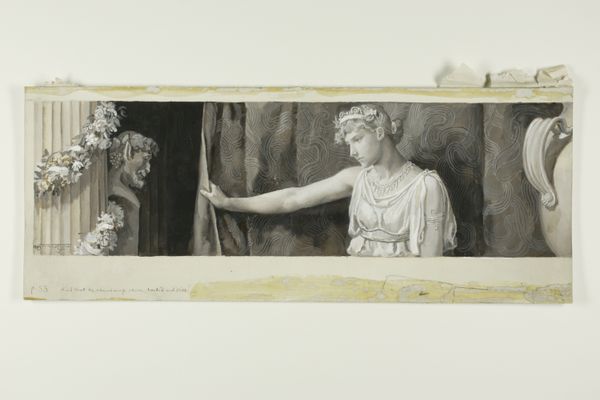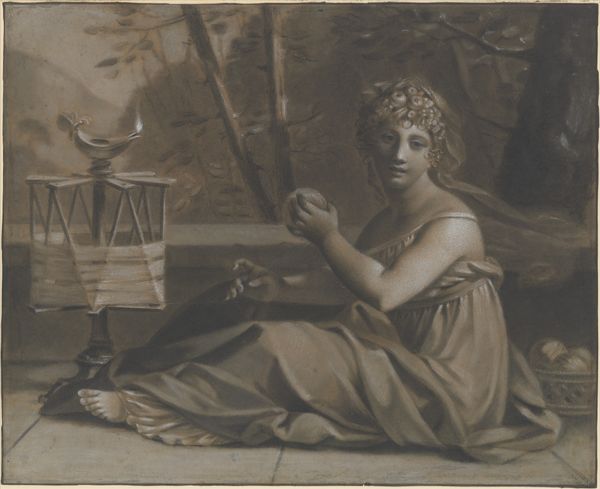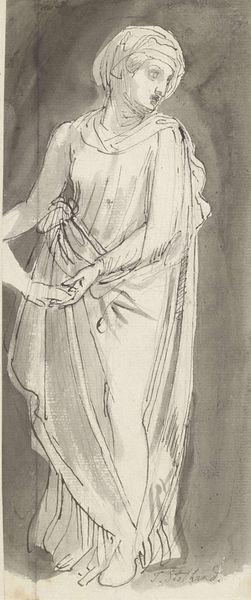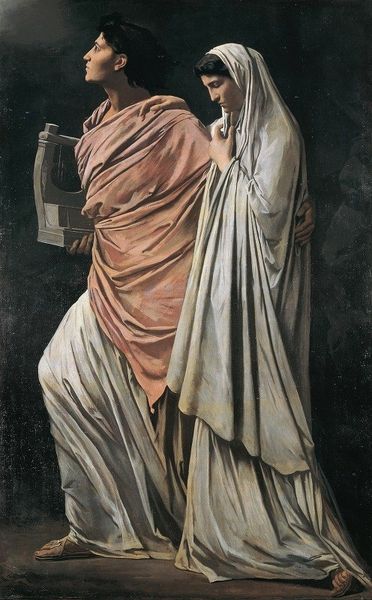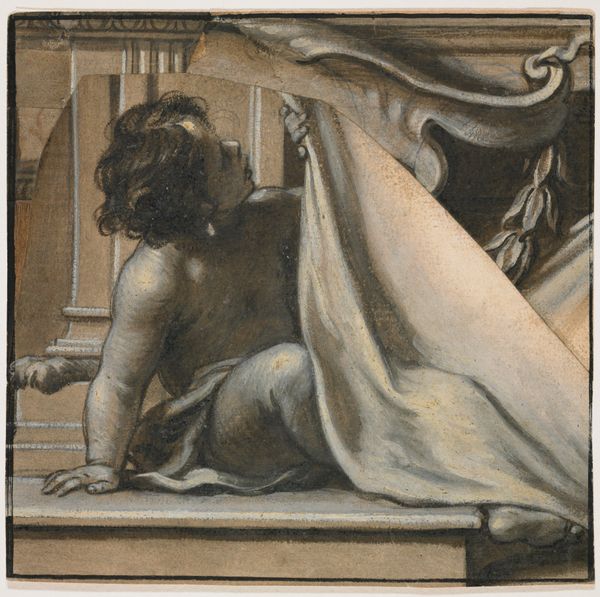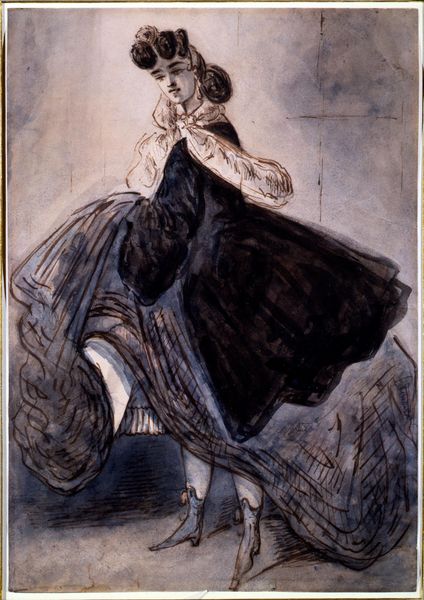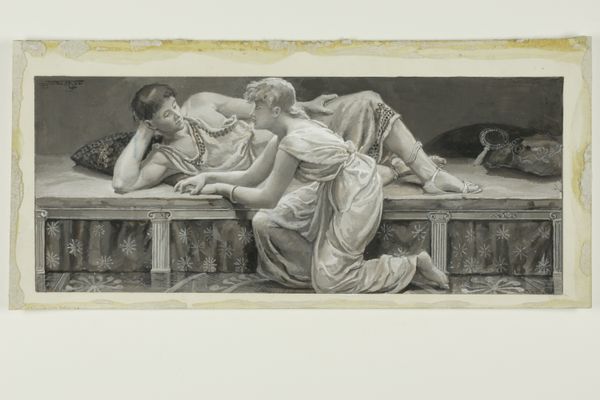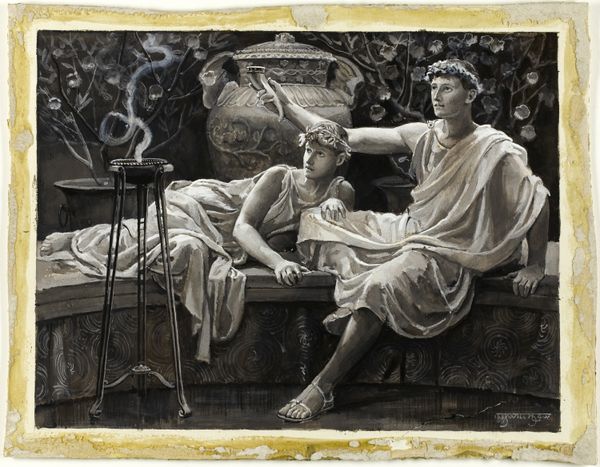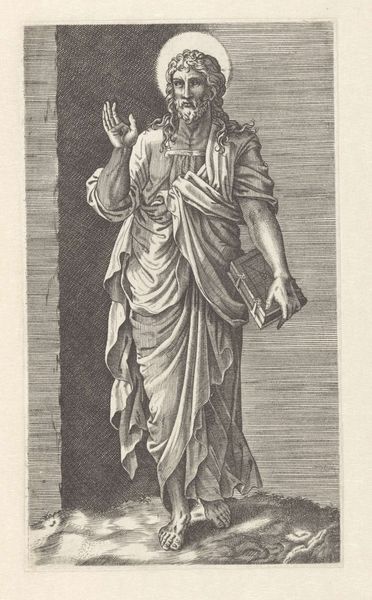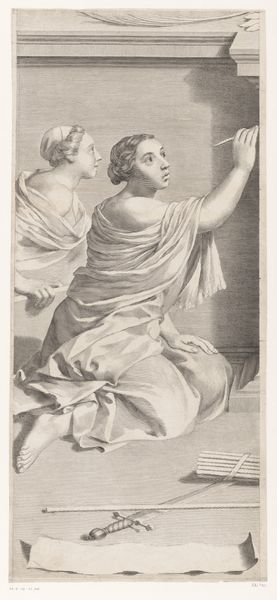
drawing, print, gouache
#
portrait
#
drawing
# print
#
gouache
#
landscape
#
classicism
#
19th century
#
history-painting
#
academic-art
Dimensions: 134 × 360 mm
Copyright: Public Domain
Curator: Will Hicock Low's "They had Arrived Before a Pillared Porch," completed around 1885, presents a compelling tableau that calls for some thought, don't you think? Editor: Intriguing. My immediate impression is a study in contrasts, a sort of tension between intimacy and monumentality, warmth and stone. There's something a bit unsettling about it, honestly. Curator: Indeed. The artwork's composition, rendered in gouache and drawing on print, immediately places it within a broader tradition of classicism. But I see an intermingling of personal narrative as well. This period for Low was steeped in exploration of societal expectation of interpersonal relationships within domestic spaces, if one delves beyond the architectural constructs portrayed. Editor: Right, I'm seeing a classic architectural framework here, with a twist. Those sharp, clean lines draw your eye in; very strong verticals created by the column and framed architectural structures, which seem almost like the individuals are enclosed by societal structures. But does the classical architectural style indicate a utopian setting, perhaps suggesting historical societal possibilities and opportunities? The symmetry adds a real weight. Curator: It speaks to both the stability and potential for oppression inherent within the framework. How does this image communicate themes of identity in an era of prescribed roles, with this almost literal framework defining their lives? The classical architectural setting seems symbolic of both opportunity and constraint within the domestic sphere, it certainly provides an interesting framework of discussion. Editor: Interesting angle! Now, technically speaking, observe how Low used light. It feels muted, almost dreamlike. See how the softness of the light shapes the form and also highlights a melancholic effect? Curator: The use of gouache allows for that lovely matte finish, reducing the glare and adding to the emotional distance of the piece, yes. The cool tones chosen further amplify a sentimentality attached to reflection and a look into history. These choices enhance the thematic tension you pointed out. Editor: Yes, a lot of reflection…Well, it’s interesting how an ostensibly classical image provokes so much dialogue. I keep coming back to how it's really more than just pretty structure or symmetry; Low’s approach here really adds more contemporary issues, especially as we think about architecture as structures defining a range of relations between freedom, class, gender, race, and more. Curator: Absolutely. Through our conversation we can see the historical within the personal—art offers space for broader narratives that address identity and structure, which makes all this richer, wouldn't you agree?
Comments
No comments
Be the first to comment and join the conversation on the ultimate creative platform.
